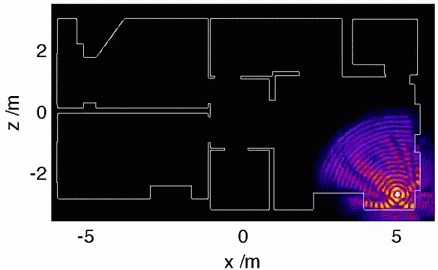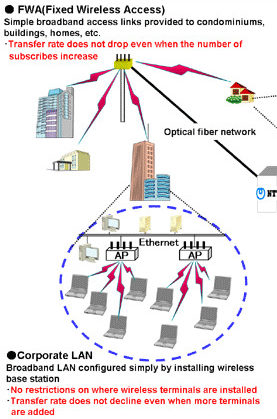Wi-Fi has been a great source of frustration for all Jesuit students. Luckily, things are about to change! Interested in why it was slow? Want to know what’s going to improve? Read more for Wi-Fi infomation from an exclusive The Roundup interview with the IT department.
Signal issues
Our current Cisco system is over 7 years old. Not only did it break easily, but it was simply an older technology.

As you can see, the router in the corner of the room is shooting out the signal everywhere like a donut. As long as you are in the donut, you are getting signal.

With the newer technology, we are hiring Ruckus to install a newer technology called MIMO (multi-in multi-out).
With the new stuff if you are in range of the access point it does something called beam-flex where it actually slants the coverage to you instead of sending it out everywhere.
Instead of just bathing the surroundings with the signal, the access points send beams directly to each device.
Firewall issues
Our old firewall had a maximum bandwidth of 500 megabits. This 500 megabit limit caused issues when we started hitting that upper limit. We’d be using as much as possible and if you were the next person in line to get data, you would have to wait until someone else was done.
Over Spring Break the IT department installed a new Firewall with new speeds of up to one gigabit! On average we use about 500 megs at any one time, so lots of the Wi-Fi issues have already been eliminated. Did you notice?
It’s a huge improvement, but it still has limitations. If everyone were streaming Netflix at the same time that’d be around 2.2 gig – way too much – but at any given time not everyone is doing that. “That’s one of the things about building a network, you have to figure out legitimately how much we are using at any one time,” said IT department head Mr. McKneely.
The wired computers have already been hooked up, so you should be seeing consistent, better speeds.
Battery life
Say you are using the Wi-Fi at school. Your iPad is flat on the desk, but you have to get a better look so you tilt it up. By tilting your iPad, you just changed your iPad’s wireless axis. Your device is now receiving the signal a different way and has to process the change. It doesn’t have a huge effect, but, over the course of the day, all this extra processing takes a toll on the battery life.
The new system will eliminate the issue. The wireless beams go straight to your device, making it easier for your device to interpret, saving your battery! Whoo-hoo!
Handoff
Have you ever been walking down a hall while online, and suddenly the Wi-Fi cuts out and begins to buffer? That was because your device was switching from one access point to the next. With the current system, this can be kind of slow, even with the total of 97 access points.
With the new system, the handoff will be a lot better. The newer technology can more effectively connect devices. We will go from 97 access points to 79 and the IT department has put a lot more planning into placing them.
“It’s a very complicated process,” explained McKneely.
Why isn’t it operational yet?
Over Spring Break, the IT department installed all the hardware. However, they did not have time to test the new network (things like speeds, handoffs, range, etc).
The problem is they can’t perform these tests with the current Wi-Fi system running.
“It’s one of those decisions, it’s hard to justify,” said McKneely. “If things are going OK and we try something new and it didn’t work that’d be a big disturbance. We don’t want to take that chance.”
The system may be in use after Easter, but maybe not until next school year depending on how testing goes.
The firewall was the first step. McKneely said “Upgrading the WiFi will be the next step. We may not see a big jump in performance because the bigger jump just happened with the firewall. But I think it will make the students’ lives a lot easier, it’ll be faster.”
Fun Facts
Can administrators see your screen if you are on the Wi-Fi?
No, but administrators can see what is happening on the network at any time of the day. But the reality is there are 1100 students, 200 faculty, and guests. They only check individual devices if the firewall flags it (usually because of viruses, malware, etc). They can see your name though because of your Wi-Fi login.
Why can’t we sign on to guest anymore?
Jesuit-Student has more capabilities, megabits, and speeds. The new guest network will be open to all guests, but there will be a longer sign up process to ensure security. “We don’t want the guest network to be as good as the student network obviously because students are more important to us.”
Do teachers get faster Wi-Fi?
No, both students and teachers will login to the same network and receive the same speeds.
Special thanks to Mr. McKneely for sharing all this information with The Roundup. And thank you to the whole IT department for keepin’ us up to speed!
See you next time on The Roundup!






